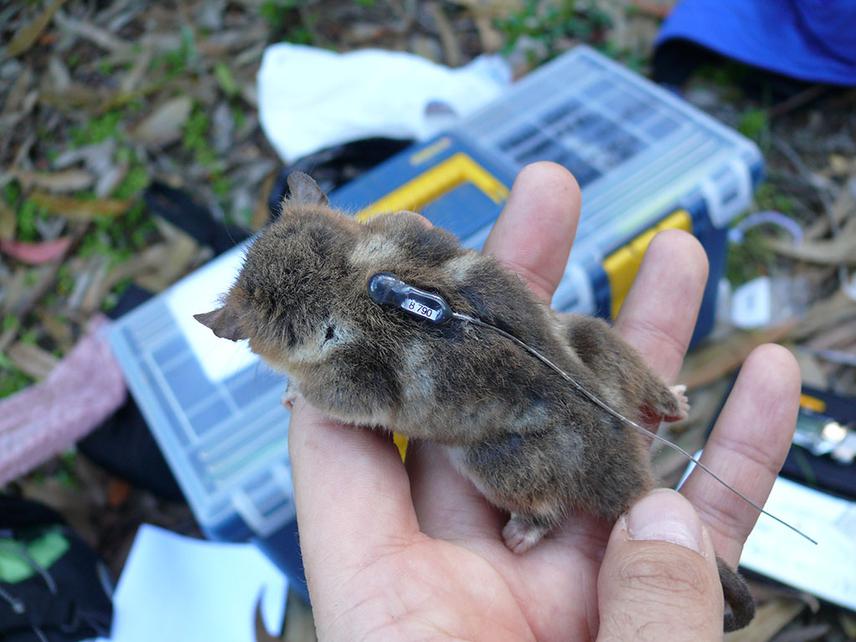Francisco E. Fonturbel
Other projects
19 Sep 2011
Effects of Habitat Degradation on the Monito del Monte (Dromiciops gliroides) and its Consequences on the Seed Dispersal Interaction with an Endemic Mistletoe
I aim to:
(1) examine Dromiciops gliroides’ movement and space use patterns at native and transformed forests; and
(2) relate D. gliroides space use with seed dispersal.

Dromiciops gliroides is an arboreal endemic marsupial of the southern South American rainforests, which has a major role as seed disperser. Dromiciops gliroides is the only extant species of the Gondwanian Order Microbiotheria, making it an evolutionary unique element and a conservation priority. This species was considered to be restricted to native old-growth forests.
However, in a previous project we found this species inhabiting transformed habitats, composed by exotic Eucalyptus globulus trees and native understory regenerated in between. Dromiciops gliroides is the only disperser of the keystone mistletoe Tristerix corymbosus, which was found densely aggregated at the Eucalyptus-dominated habitat, in comparison to the native forest stands.
This project aims to track Dromiciops gliroides at native and transformed habitats using VHF radio-telemetry, to determine whether habitat structural differences and resource (i.e., fleshy fruits) spatial arrangement between native and transformed stands are changing disperser’s behaviour in terms of movement and space use patterns. Such behavioural modification would be directly related to seed dispersal activities, since it will determine how far seed may arrive and the degree of spatial aggregation of the new recruits. I hypothesized that the abundance and spatial aggregation of fruiting plants at the Eucalyptus-dominated habitat would reduce Dromiciops gliroides’ dispersal distance and concentrate its space use in smaller foraging areas, which may explain why mistletoes are densely aggregated at those transformed habitats.
The results of this research would have two broader implications:
(1) to know how a degraded forest could be recovered through promoting natural seed dispersal (conducted by Dromiciops gliroides and some frugivorous bird species as well), and
(2) to scientifically advise the long-term restoration program that the Valdivian Coastal Reserve is undertaking, aiming to restore the native vegetation on those areas where Eucalyptus globulus has been planted 20 years ago.
Finally, this project will also allow students to participate and learn field and data analysis techniques, and I will continue with the education & outreach activities that I have started in 2012, involving the production of educative materials, workshops for rural and urban elementary schools, and the interaction with local communities and park rangers.